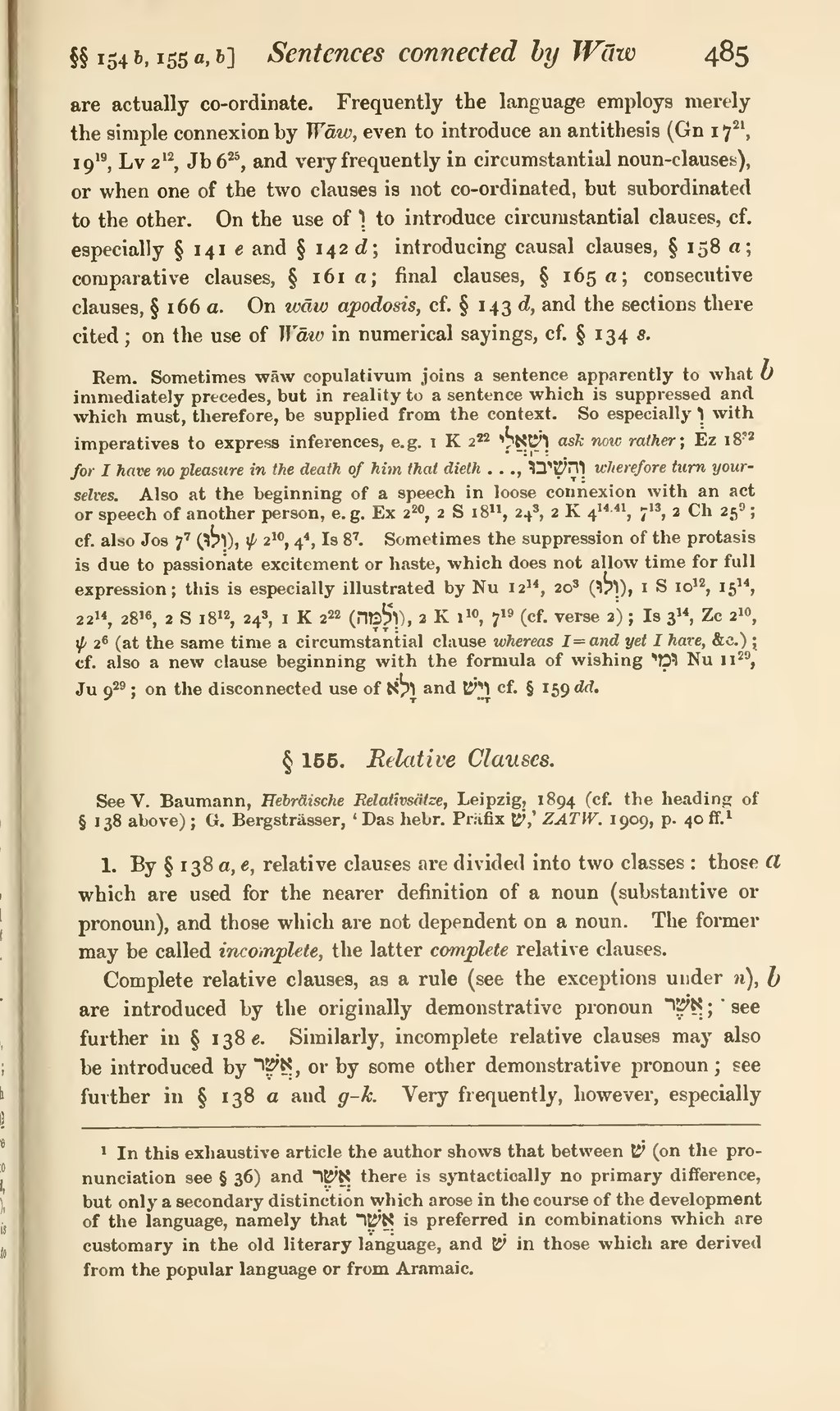are actually co-ordinate. Frequently the language employs merely the simple connexion by Wāw, even to introduce an antithesis (Gn 1721, 1919, Lv 212, Jb 625, and very frequently in circumstantial noun-clauses), or when one of the two clauses is not co-ordinated, but subordinated to the other. On the use of וְ to introduce circumstantial clauses, cf. especially § 141 e and § 142 d; introducing causal clauses, § 158 a; comparative clauses, § 161 a; final clauses, § 165 a; consecutive clauses, § 166 a. On wāw apodosis, cf. § 143 d, and the sections there cited; on the use of Wāw in numerical sayings, cf. § 134 s.
[b] Rem. Sometimes wāw copulativum joins a sentence apparently to what immediately precedes, but in reality to a sentence which is suppressed and which must, therefore, be supplied from the context. So especially וְ with imperatives to express inferences, e.g. 1 K 222 וְשַֽׁאֲלִי ask now rather; Ez 1832 for I have no pleasure in the death of him that dieth..., וָהָשִׁיבוּ wherefore turn yourselves. Also at the beginning of a speech in loose connexion with an act or speech of another person, e.g. Ex 220, 2 S 1811, 243, 2 K 414, 41, 7:13, 2 Ch 259; cf. also Jos 77 (וְלוּ), ψ 210, 44, Is 87. Sometimes the suppression of the protasis is due to passionate excitement or haste, which does not allow time for full expression; this is especially illustrated by Nu 1214, 203 (וְלוּ), 1 S 1012, 1514, 2214, 2816, 2 S 1812, 243, 1 K 222 (וָלָ֫מָּה), 2 K 110, 719 (cf. verse 2); Is 314, Zc 210, ψ 26 (at the same time a circumstantial clause whereas I=and yet I have, &c.); cf. also a new clause beginning with the formula of wishing וּמִי Nu 1129, Ju 929; on the disconnected use of וָלֹא and וָיֵשׁ cf. § 159 dd.
[a] 1. By § 138 a, e, relative clauses are divided into two classes: those which are used for the nearer definition of a noun (substantive or pronoun), and those which are not dependent on a noun. The former may be called incomplete, the latter complete relative clauses.
[b] Complete relative clauses, as a rule (see the exceptions under n), are introduced by the originally demonstrative pronoun אֲשֶׁר; see further in § 138 e. Similarly, incomplete relative clauses may also be introduced by אֲשֶׁר, or by some other demonstrative pronoun; see further in § 138 a and g–k. Very frequently, however, especially
- ↑ In this exhaustive article the author shows that between שׁ (on the pronunciation see § 36) and אֲשֶׁר there is syntactically no primary difference, but only a secondary distinction which arose in the course of the development of the language, namely that אֲשֶׁר is preferred in combinations which are customary in the old literary language, and שׁ in those which are derived from the popular language or from Aramaic.
